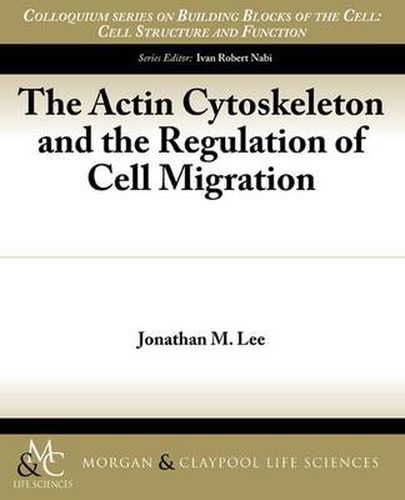Readings Newsletter
Become a Readings Member to make your shopping experience even easier.
Sign in or sign up for free!
You’re not far away from qualifying for FREE standard shipping within Australia
You’ve qualified for FREE standard shipping within Australia
The cart is loading…






The mammalian cytoskeleton is an internal framework of actin, tubulin, and intermediate filament proteins. Proteins of these three classes assemble non-covalently into filamentous polymers that support the structural integrity of the relatively fragile lipid plasma membrane. In addition, cytoskeletal polymers provide the mechanical strength that hold a cell together and anchor it to its growth substrate. The cytoskeleton must also have the capacity for rapid and substantial remodeling and provide the motive and tractor force necessary to drive motility. As such, the cytoskeleton has a functional duality: sufficiently rigid to prevent plasma membrane deformation but pliable enough to allow for cytokinesis; sufficiently adhesive to allow for traction but dynamic enough to allow movement from one place to another. A major research challenge in cytoskeleton biology is to understand how cytoskeletal proteins assemble and dissemble in support of physiological processes. This chapter will focus on the role of the actin cytoskeleton in cell migration. More specifically, we will focus on the actin cytoskeleton of vertebrate cells.
$9.00 standard shipping within Australia
FREE standard shipping within Australia for orders over $100.00
Express & International shipping calculated at checkout
The mammalian cytoskeleton is an internal framework of actin, tubulin, and intermediate filament proteins. Proteins of these three classes assemble non-covalently into filamentous polymers that support the structural integrity of the relatively fragile lipid plasma membrane. In addition, cytoskeletal polymers provide the mechanical strength that hold a cell together and anchor it to its growth substrate. The cytoskeleton must also have the capacity for rapid and substantial remodeling and provide the motive and tractor force necessary to drive motility. As such, the cytoskeleton has a functional duality: sufficiently rigid to prevent plasma membrane deformation but pliable enough to allow for cytokinesis; sufficiently adhesive to allow for traction but dynamic enough to allow movement from one place to another. A major research challenge in cytoskeleton biology is to understand how cytoskeletal proteins assemble and dissemble in support of physiological processes. This chapter will focus on the role of the actin cytoskeleton in cell migration. More specifically, we will focus on the actin cytoskeleton of vertebrate cells.